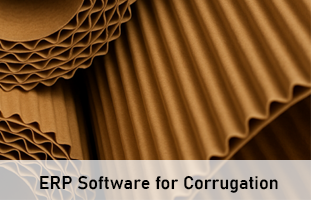Did you know ? You can help your staff “age” with grace… give them safety of regular Pension in Private sector too. ( at No cost to you)
You run a private sector company. + Your staff does not get any pension, after they retire…..
💐
What if their kids don’t take care of them, when they get “Old age”.
🤔
How about giving them the net of pension safety ?
Did you know ? You and they can Save More Income tax than you currently do ? On the “additional Rs 50,000” u/s 80CCD(2).
Many Clients of Finsys have already started this Innovative Scheme of Govt of India, and getting good tax benefits for self and other staff.

This is called NPS
One can save tax in three ways via NPS. First, NPS investments are eligible for deduction under Section 80C. ( LIC, School Fee, Housing Loan instalment etc)

If one has already exhausted the Rs 1.5 lakh ceiling under Section 80C, one can claim an additional deduction of up to Rs 50,000 under Section 80CCD(1b). Lastly, up to 10% of the basic salary put in the NPS can be claimed as deduction under Section 80CCD(2).
Even, those very close to retirement, can claim more tax benefits if their company offers the NPS benefit. Under Section 80CCD(2), up to 10% of the basic salary put in the NPS by the company on behalf of the employee is tax free.
Point to note: The entire amount withdrawn will not be tax free. Though there is no reference to this in the tax laws, one can reasonably assume that 60% of the withdrawn amount will be tax free while the balance 40% will be taxed at the normal rate.
 This is actually an intelligent, simple and user friendly deferment of tax
This is actually an intelligent, simple and user friendly deferment of tax
So, instead of paying a big 30% tax now

you can deposit now, Save tax.
on the top of it, earn 5% p.a. to 20% p.a. cumulatively on that …. based on your investment profile ( Shares vs Private Debt vs Govt Debt )
You may pay the tax (if any) when you retire
Of course , Old age income ke liye ke liye saving to karni hi Chahiye
 Note : By that time the tax exemption limits might have reached Rs 20 lakh or maybe Rs 30 lakhs…. and all your NPS pension money might be tax free after all
Note : By that time the tax exemption limits might have reached Rs 20 lakh or maybe Rs 30 lakhs…. and all your NPS pension money might be tax free after all
NPS Scheme – NSDL Site
https://enps.nsdl.com/eNPS/NationalPensionSystem.html
NPS Trust welcomes you to ‘eNPS’ ,which will facilitate:-
➤ Opening of Individual Pension Account under NPS (only Tier I / Tier I & Tier II) by All Indian Citizens (including NRIs) between 18 – 70 years
➤ Making initial and subsequent contribution to your Tier I as well as Tier II account
For Account opening, you need to:
✔ Have Mobile number, email ID and an active Bank account with net Banking facility enabled
✔ In case, an applicant selects to open the individual pension account with PAN, the activation of
the PRAN is subject to KYC verification by the empanelled POP (name and address should
match with POP record) selected by applicant during the registration process.
To view the list of empanelled POP, Click Here
✔ Fill up all the mandatory details online
✔ Click Here for guidelines on filling details if Applicant residence for tax purposes in jurisdiction (s)
outside India
✔ Scan and upload your photograph (optional for Aadhaar) and signature
✔ Make online payment (Minimum amount of ₹ 500)
✔ Subscriber will have an option to authenticate form through OTP Authentication or eSign process

Some Extracts from the Sites of some banks offering the same : ( MLG has no allegiance with any of them )

![]()


UBI Website link :

https://www.unionbankofindia.co.in/english/nationalpensionsystem
National Pension System (NPS)
|


https://www.hdfcbank.com/personal/invest/nps-national-pension-system
National Pension System (NPS) is a retirement benefit Scheme introduced by the Government of India to facilitate a regular income post retirement to all the subscribers. PFRDA (Pension Fund Regulatory and Development Authority) is the governing body for NPS.
Salient Features & Benefits
National Pension System (NPS) is based on unique Permanent Retirement Account Number (PRAN) which is allotted to every subscriber. In order to encourage savings, the Government of India has made the scheme reassuring from security point of view and has offered some attractive benefits for. NPS account holders.
An NPS Account offers the following benefits:
- Regulated: NPS is regulated by PFRDA (Pension fund regulator under Ministry of Finance, Govt. of India.) which ensures transparent norms governing the activities. NPS Trust ensures adherence to the guidelines through regular monitoring.
- Voluntary: It is a voluntary scheme for all citizens of India. You can invest any amount in your NPS account and at anytime.
- Flexibility: You have the flexibility to select or change the POP (Point of Presence), investment pattern and fund manager. This ensures that you can optimize returns as per your comfort with various asset class (Equity, Corporate Bonds, Government Securities and Alternate Assets) and fund managers.
- Economical : NPS is one of the lowest cost investment products available.
- Portability: NPS account or PRAN will remain same irrespective of change in employment, city or state.
- Superannuation Fund transfer: NPS account holders can transfer their Superannuation funds to their NPS account without any tax implication. (Post approval from relevant authorities)
- Tax Benefits: NPS offers triple tax benefits which are as follows:
| Tax benefits for Salaried Individual | Tax Benefits for Self Employed Individual |
| You can claim tax exemption upto Rs. 50,000 under section 80CCD (1B). This benefit is over an above limit of Rs. 1,50,000 under section 80C. | You can claim tax exemption upto Rs. 50,000 under section 80CCD (1B). This benefit is over an above limit of Rs. 1,50,000 under section 80C. |
| You may invest upto 10% of your basic salary + dearness allowance and claim tax exemption on the invested amount under section 80CCD(1). This tax exemption is subject to a limit of Rs. 1,50,000 under section 80C of Income Tax Act, 1961. | You may invest upto 20% of your gross annual income and claim tax exemption on the invested amount under section 80CCD(1). This tax exemption is subject to a limit of Rs. 1,50,000 under section 80C of Income Tax Act, 1961. |
*Employer contribution benefit is capped upto 7.5 lakhs for NPS, PF & Superannuation

![]() https://sbi.co.in/web/personal-banking/investments-deposits/govt-schemes/nps
https://sbi.co.in/web/personal-banking/investments-deposits/govt-schemes/nps
National Pension System (NPS) is a defined contribution pension system introduced by the Government of India as a part of Pension Sector reforms, with an objective to provide social security to all citizens of India. It is administered and regulated by PFRDA.















